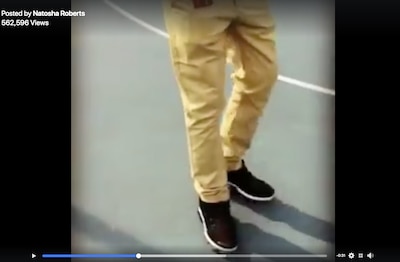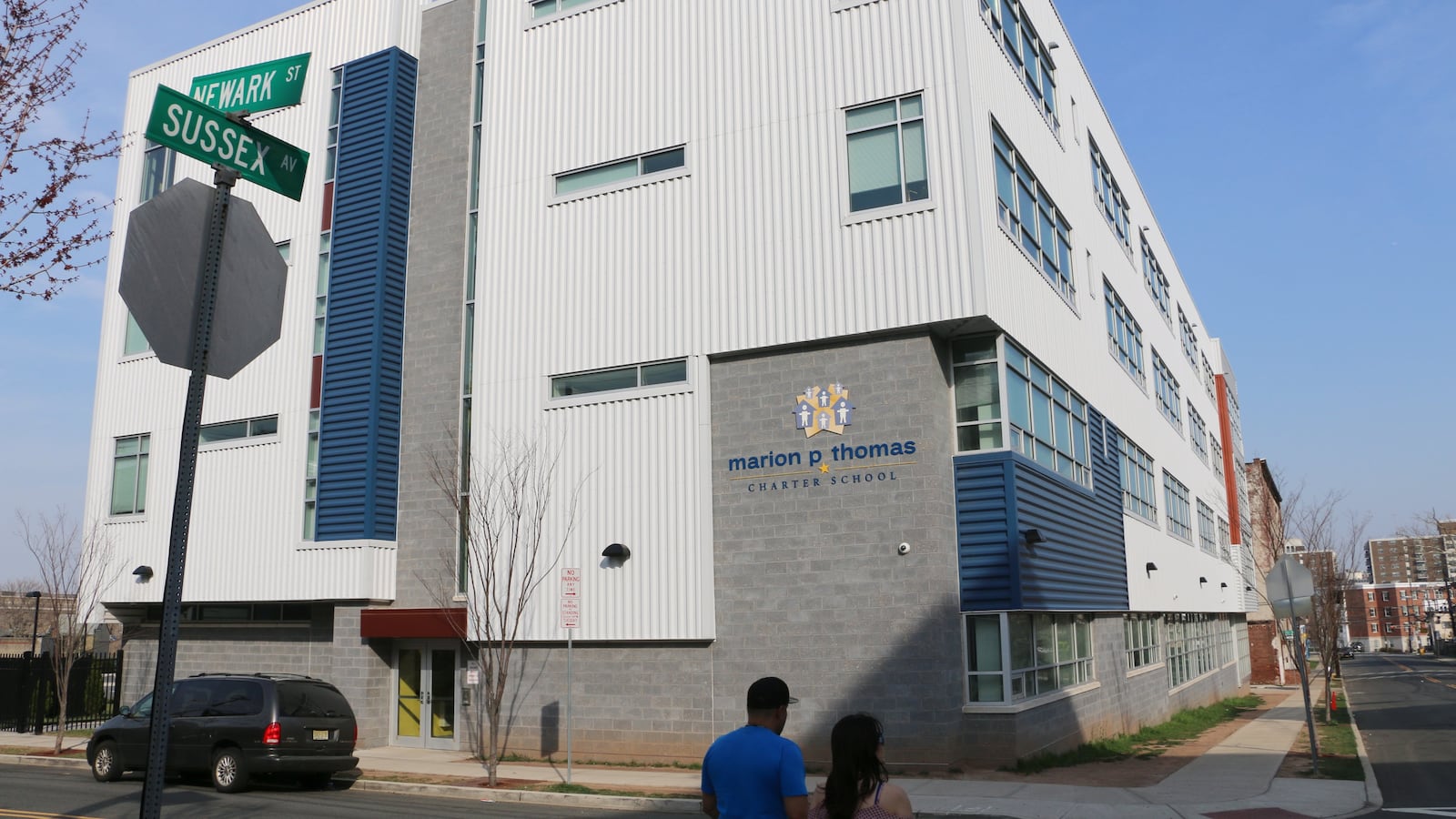A Newark charter high school faced a storm of online outrage this week after it forced dozens of students onto the street on the first day of class due to minor uniform infractions, such as lacking belts or wearing shoes with white soles instead of black.
After the students were sent out of Marion P. Thomas Charter School on Monday, a community activist found them idling at a nearby park. He then confronted school staffers about the incident; videos of the confrontation that were posted online have been viewed more than 560,000 times and generated hundreds of angry comments.
“Why would you kick a child 13 or 14 years old out into the streets?” said Thomas “Afrika” Ibiang, the activist who confronted the officials, in an interview Friday. “It makes no sense unless you see those people as less than.”
Founded in 1999 by Newark’s historic New Hope Baptist Church, Marion P. Thomas now enrolls about 1,600 students in pre-kindergarten through 12th grade. With a student population that is 94 percent black and 6 percent Hispanic, the school describes itself as “the largest minority led, independently operated free public charter school in New Jersey.”
About a third of Newark students attend charter schools, which are publicly funded but independently operated. While widespread and popular with many Newark families, charter schools remain controversial. Critics have attacked their strict discipline policies, and officials — including Mayor Ras Baraka — have called for a halt to the charter sector’s rapid expansion.
According to Marion P. Thomas officials, parents were informed about the dress code through fliers, automated phone calls, and a family orientation meeting before classes began on Aug. 27. (The school was only in session from 9:30 a.m. to 12:30 p.m. the first week.) When some of the network’s high school students arrived that morning without the proper uniform — khaki pants, blue shirts with the school logo, belts, and black shoes — they were told to leave until their uniforms met all the requirements.
After they were turned away, many of the students ventured to a park across the street from the school’s Central Ward campus. Ibiang, who runs a nonprofit called Ma’at Youth Services with his wife, was leading a youth basketball camp at the park. He said he soon saw roughly 50 students congregating at the park, sitting on benches or playing basketball to pass the time.
He then asked a boy in a blue Marion P. Thomas polo shirt what happened, according to a video Ibiang recorded on his phone. The video, which was posted on Facebook, has been viewed over 560,000 times.

“Why aren’t you in school?” Ibiang asks the boy.
“Because I got white on my sneakers,” he replies. The video shows the boy’s black sneakers have partially white soles.
“And they say because you have white on your shoes you can’t get into school?” Ibiang says, which the boy confirms.
“That’s crazy,” Ibiang says.
Other videos show Ibiang asking employees in the school’s main office why the students were sent away. As Ibiang raises his voice in frustration, the employees ask whether he has a “scholar” who attends the school and why he is recording the interaction.
“To keep track, to have evidence,” he replies. “I don’t trust people who kick our kids into the street.”
The widely viewed videos have generated hundreds of comments. Some of the commenters sided with the school, saying parents are responsible for making sure their children adhere to the uniform policy. But others said they were horrified that the school would deny students a day of learning simply because they were out of uniform.
“Education don’t matter to them,” one woman wrote on the school’s Facebook page. “Only the control of the students do.”
Malika Berry said her son, Sahir Minatee, a former 10th-grader at Marion P. Thomas, was one of the students turned away Monday because his shoes were not completely black. She said she only learned that Sahir had been kept out of school through online messages, and was never notified by the school.
“It’s illegal,” she said. “Why didn’t nobody inform me that my son was kicked out of school?”
School officials said they called the families of students who were sent out Monday.
When Sahir returned to school Tuesday, she said school employees informed him that his family had not submitted the necessary paperwork to verify they live in the city. (Charter schools must show that their students live within the district in order to receive state funds.)
Berry says she tried to present residency documents to the school this week, but they said the deadline had passed and she would have to re-enroll through the district, which handles both charter and traditional school admissions. After visiting the district enrollment office, her son was assigned to West Side High School, she said.
“I haven’t eaten, I haven’t slept,” Berry said. “My son is stressed out; he has to go to a new school.”
Misha Simmonds, Marion P. Thomas’ interim chief school administrator, declined to discuss Sahir’s situation specifically.
He said the school began notifying families in the spring that they had to re-verify their residency in order to remain enrolled. The school continued to call and write families over the summer until the enrollment deadline in mid-July, Simmonds said. After that, about 75 students were “dis-enrolled,” and their families were informed by phone or letter, he said.
Regarding Monday’s incident, he said the school told parents about the dress code before classes began. Still, officials soon recognized that they made a mistake by forcing students onto the streets if they were not fully in uniform, Simmonds said.
“We acknowledge there could have been safety issues with students turned away from school and ending up in the park, and that’s not what our intent was,” he said. “Safety is our ultimate priority.”
On Tuesday, the school did not force out any students who were not in uniform. Instead, the school helped the students correct any dress code violations by giving them belts or black socks or using black tape to cover any non-black parts of their shoes, Simmonds said.
He also sent families a letter on Tuesday explaining that the uniform policy is meant to foster unity, “bridge socioeconomic differences between students,” and prepare them for the workplace, but that the school would no longer turn away students who are out of uniform.
“It’s important that we hold students to a high standard across all areas,” he told Chalkbeat, including in their dress, behavior, and academics. “But we acknowledge that turning away students was not appropriate.”

